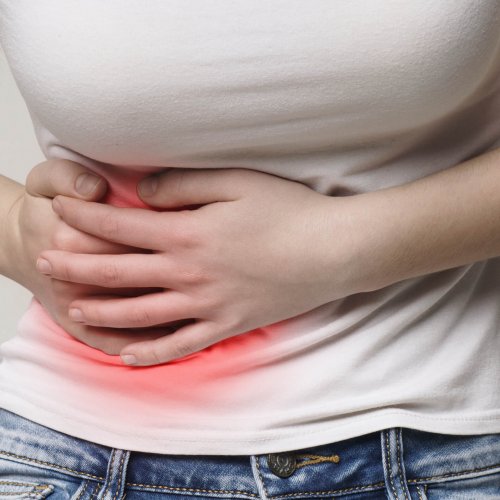- POWERFUL SURGICAL SOLUTIONS FOR YOUR HEALTH
- Phone: (201) 833-2888


The gallbladder is a small, pear-shaped organ located in the upper right part of the abdomen next to the liver. The role of the gallbladder is to store bile, a substance produced by the liver and used to break down fats from food.
The most common cause for removal of the gallbladder is pain secondary to gallstones. Gallstones get formed in the gallbladder during the imbalance of substances like cholesterol that supersaturate the bile being stored. The majority of patients with gallstones are asymptomatic, but in a small percentage of patients they can lead to blockage of different portions of the bile ducts and thus irritate the gallbladder itself and can cause acute cholecystitis, cholangitis, or lead to acute pancreatitis, or inflammation of both of these organs.
It is rarely possible to use pills that dissolve gallstones, but the most effective and most common way is to remove the gallbladder as a whole.

Sudden and intense abdominal pain
Nausea and Vomiting
Appearance of jaundice – yellow discoloration of the skin and the eyes
Diagnosis is based on a combination of physical exam, blood work, and imaging. Evaluation of liver function tests may determine the degree of inflammation or give insight into whether the pancreas or main bile duct is being blocked by a gallstone, which may require endoscopic removal. Additionally, imaging with an ultrasound, CT scan, or MRI may help determine the presence or abscess of gallstone, and the location of gallstones outside the gallbladder if suspected. A nuclear medicine study, called a HIDA scan, may help determine if the gallbladder is not functioning correctly.
The gold standard of gallbladder removal is laparoscopic surgery. It is a minimally invasive approach that leads to faster recovery, less time spent in the hospital and smaller scars.
It is performed under general anesthesia and during the operation, 4 small incisions are made, around the right upper portion of the abdomen. The abdomen is filled with CO2 gas and a laparoscope, or thin flexible tube with a light and a camera on the end, is used for enhanced visualization. The additional incisions are used for the surgical instruments needed to perform the procedure. The gallbladder is separated from its attachments to the liver and main common bile duct and sent to the pathologist to be examined.
After the operation, the patient is often discharged home the same day, staying on a low- fat diet for a few months as the body adjusts to not having a gallbladder. Recovery takes about 2 weeks.
In rare cases, when laparoscopy is not a safe option, the surgery may be performed with a large open incision. Recovery may take longer due to the larger incision.
Diagnosis is based on a combination of physical exam, blood work, and imaging. Evaluation of liver function tests may determine the degree of inflammation or give insight into whether the pancreas or main bile duct is being blocked by a gallstone, which may require endoscopic removal. Additionally, imaging with an ultrasound, CT scan, or MRI may help determine the presence or abscess of gallstone, and the location of gallstones outside the gallbladder if suspected. A nuclear medicine study, called a HIDA scan, may help determine if the gallbladder is not functioning correctly.
The gold standard of gallbladder removal is laparoscopic surgery. It is a minimally invasive approach that leads to faster recovery, less time spent in the hospital and smaller scars.
It is performed under general anesthesia and during the operation, 4 small incisions are made, around the right upper portion of the abdomen. The abdomen is filled with CO2 gas and a laparoscope, or thin flexible tube with a light and a camera on the end, is used for enhanced visualization. The additional incisions are used for the surgical instruments needed to perform the procedure. The gallbladder is separated from its attachments to the liver and main common bile duct and sent to the pathologist to be examined.
After the operation, the patient is often discharged home the same day, staying on a low- fat diet for a few months as the body adjusts to not having a gallbladder. Recovery takes about 2 weeks.
In rare cases, when laparoscopy is not a safe option, the surgery may be performed with a large open incision. Recovery may take longer due to the larger incision.
It is rarely possible to use pills that dissolve gallstones, but the most effective and most common way is to remove the gallbladder as a whole.

Diagnosis is based on a combination of physical exam, blood work, and imaging. Evaluation of liver function tests may determine the degree of inflammation or give insight into whether the pancreas or main bile duct is being blocked by a gallstone, which may require endoscopic removal. Additionally, imaging with an ultrasound, CT scan, or MRI may help determine the presence or abscess of gallstone, and the location of gallstones outside the gallbladder if suspected. A nuclear medicine study, called a HIDA scan, may help determine if the gallbladder is not functioning correctly.
The gold standard of gallbladder removal is laparoscopic surgery. It is a minimally invasive approach that leads to faster recovery, less time spent in the hospital and smaller scars.
It is performed under general anesthesia and during the operation, 4 small incisions are made, around the right upper portion of the abdomen. The abdomen is filled with CO2 gas and a laparoscope, or thin flexible tube with a light and a camera on the end, is used for enhanced visualization. The additional incisions are used for the surgical instruments needed to perform the procedure. The gallbladder is separated from its attachments to the liver and main common bile duct and sent to the pathologist to be examined.
After the operation, the patient is often discharged home the same day, staying on a low- fat diet for a few months as the body adjusts to not having a gallbladder. Recovery takes about 2 weeks.
In rare cases, when laparoscopy is not a safe option, the surgery may be performed with a large open incision. Recovery may take longer due to the larger incision.
Ready to get started?
Visit any of our convenient locations in Bergen Country or fill out the form to contact us today!
Our surgeons offer comprehensive surgical solutions and specialize in laparoscopic and robotic, minimally invasive surgery, which means less pain, shorter hospital stay, and quicker recovery time, so you can get back to your daily life.

Copyright 2024 by Heritage Surgical Group. All rights reserved.